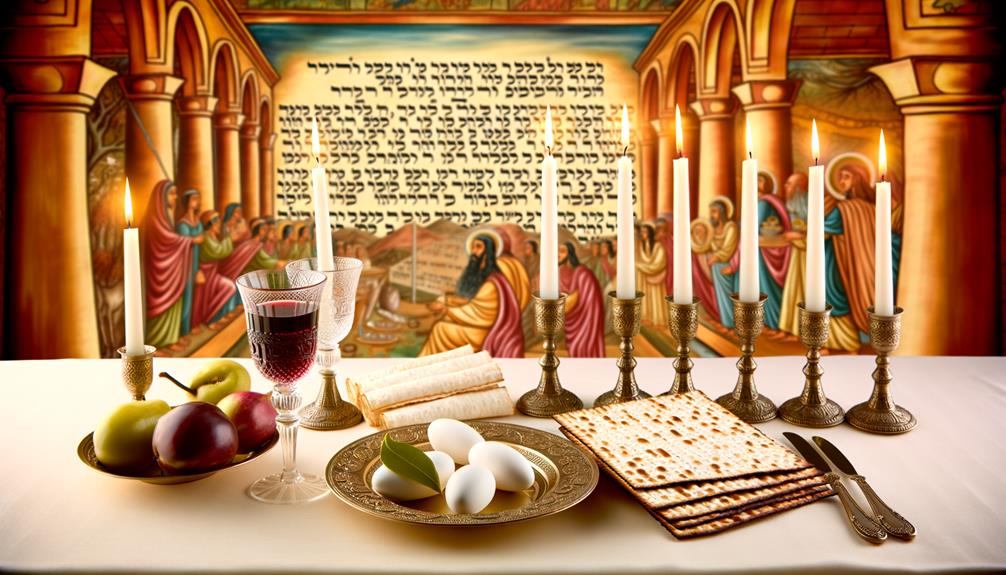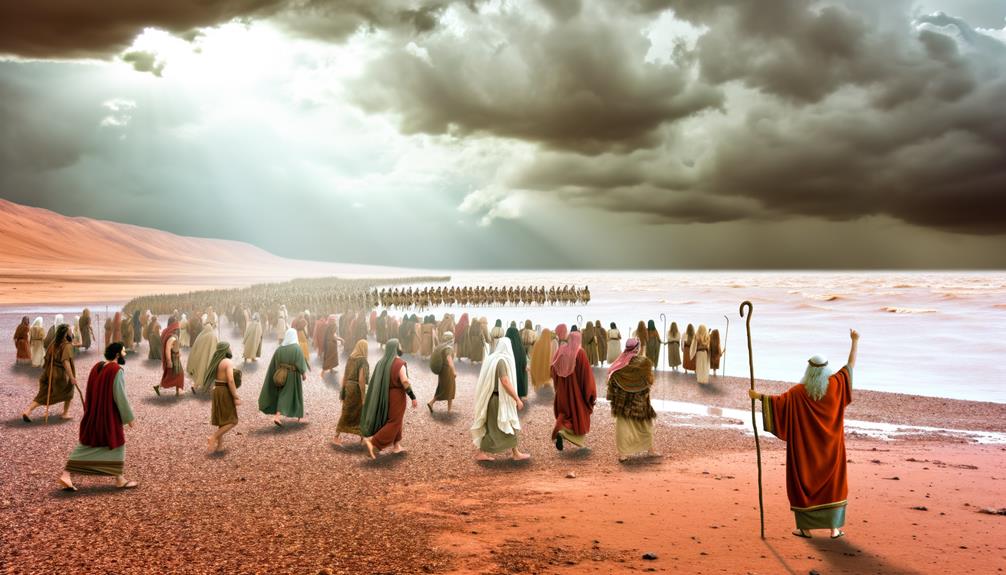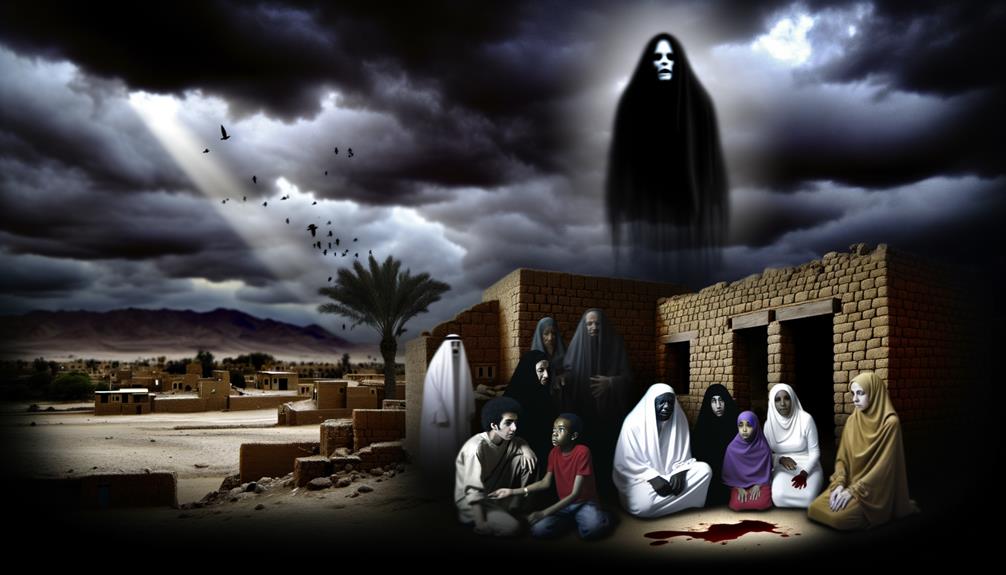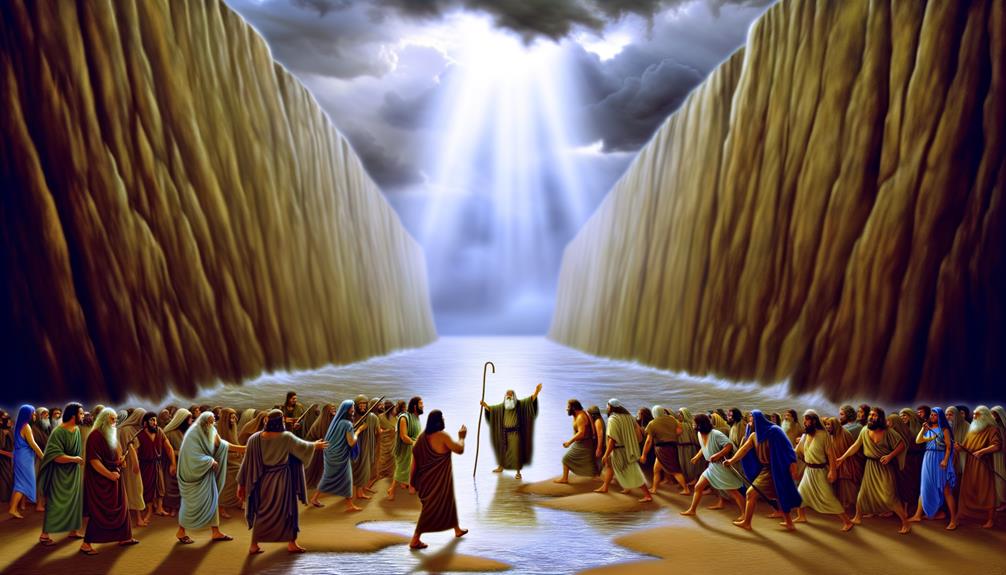What Is the Meaning of Passover According to the Bible
Passover, as described in the Bible, primarily commemorates the Israelites’ liberation from Egyptian slavery. The Exodus narrative, in the Book of Exodus, highlights this event through the divine intervention of Yahweh, leading to the establishment of a covenantal relationship.
Central to this is the tenth plague—the death of the Egyptian firstborns—which compelled Pharaoh to release the Israelites. The sacrificial lamb’s blood, protecting Hebrew homes, symbolizes innocence and divine mercy.
Rituals such as consuming unleavened bread and bitter herbs reflect the haste of Exodus and the bitterness of bondage, respectively. Explore how these elements interweave deeper theological insights.

Meaning of Passover According to the Bible: Deliverance, Covenant, and Redemption
| Biblical Theme | Meaning of Passover in Scripture |
|---|---|
| Divine Deliverance | Commemorates God freeing the Israelites from slavery in Egypt (Exodus 12:1–30). |
| Protection by the Blood | The blood of the lamb on doorposts spared lives—symbolic of Jesus as the Lamb of God (John 1:29). |
| Covenant with God | Marks the beginning of God’s covenant relationship with His people (Exodus 12:14). |
| Redemption and Freedom | Represents both physical and spiritual liberation from bondage. |
| Foreshadowing of Christ | Passover foreshadows Jesus’ sacrificial death and resurrection as the ultimate deliverance (1 Corinthians 5:7). |
The Exodus Narrative

The Exodus narrative, as detailed in the Book of Exodus, serves as the foundational story for the Jewish festival of Passover, encapsulating the Israelites’ liberation from Egyptian slavery under the leadership of Moses.
This account begins with the Israelites’ suffering under oppressive bondage in Egypt and traces their journey towards freedom.
Central to this narrative is God’s intervention through a series of miraculous events, including the appointment of Moses as the deliverer, the infliction of plagues upon Egypt, and the crossing of the Red Sea.
The narrative not only underscores themes of divine justice and deliverance but also establishes a perpetual covenantal relationship between God and the Israelites.
Through this story, Passover emerges as a profound symbol of faith, redemption, and communal identity.
The Tenth Plague

The Tenth Plague, also known as the death of the firstborns, marks a pivotal moment in the biblical narrative of Passover.
This catastrophic event led to Pharaoh’s final decision to release the Israelites from bondage, signifying a critical turning point in their journey towards freedom.
Analyzing this plague’s impact provides insight into its theological and historical significance within the broader Exodus story.
Death of Firstborns
In the biblical narrative, the death of the firstborns, known as the tenth plague, represents a pivotal moment that underscores the severity of divine judgment against Egypt.
This event, found in the Book of Exodus, signifies the climax of a series of plagues intended to compel Pharaoh to release the Israelites from bondage.
The plague’s impact was profound, affecting every Egyptian household and marking a stark delineation between the fates of the Egyptians and the Israelites, who were spared through the symbolic act of marking their doorposts with lamb’s blood.
| Aspect | Significance |
|---|---|
| Divine Judgment | Enforces God’s authority and justice |
| Societal Impact | Disrupts Egyptian societal structure |
| Religious Importance | Highlights the Israelites’ covenant with God |
| Cultural Memory | Integral to Jewish identity and tradition |
| Symbolism | Lamb’s blood as a sign of protection and obedience |
This plague ultimately serves as a profound theological statement on divine power and mercy.
Pharaoh’s Final Relent
Pharaoh’s final relent, precipitated by the devastating impact of the tenth plague, marked a critical turning point in the Exodus narrative, compelling him to release the Israelites from centuries of bondage.
This ultimate plague, the death of all firstborns in Egypt, both human and animal, serves as a profound symbol of divine intervention and justice.
The severity of this affliction broke Pharaoh’s resistance, illustrating the formidable power of Yahweh and the futility of defying divine will.
In a broader context, this event underscores the themes of liberation and deliverance that are central to the Passover story.
The Sacrificial Lamb

The concept of the sacrificial lamb in the Passover narrative serves as a powerful symbol of innocence, with the lamb’s blood marking the homes of the Israelites as a means of divine protection against the final plague.
This act of sacrifice not only signifies immediate deliverance but also establishes a theological foundation that finds its ultimate fulfillment in the New Covenant portrayal of Christ as the Paschal Lamb.
The intertwining of these elements underscores the continuity and depth of redemptive themes within the biblical canon. As narratives unfold from Genesis to Revelation, they reveal a cohesive story of grace, sacrifice, and hope that resonates through various contexts and cultures.
In this light, one can explore the meaning of willow tree symbolism, which often represents resilience and survival, reflecting the journey of redemption that permeates Scripture.
Just as the willow bends but does not break, so too do the characters in these sacred texts embody the strength that emerges through trials and divine intervention.
Symbol of Innocence
Central to the symbolism of Passover, the sacrificial lamb epitomizes innocence and purity, serving as a profound representation of deliverance and divine protection in biblical narratives.
This emblematic choice is rooted in the lamb’s characteristics—gentle, unblemished, and submissive—reflecting the moral ideal of innocence.
The lamb’s sacrificial role underscores the theological premise that purity and blamelessness are prerequisites for atonement and redemption.
Scripturally, the lamb’s innocence is juxtaposed against the backdrop of human sin and divine judgment, accentuating the magnitude of divine mercy.
This symbolism is not only pivotal in the Exodus account but also reverberates through later theological constructs, particularly within Christian soteriology, where Christ is often paralleled with the Passover lamb regarding sacrificial innocence.
Blood as Protection
Drawing upon the symbol of innocence represented by the sacrificial lamb, the application of its blood on the doorposts during Passover serves as powerful evidence of divine protection and covenantal faithfulness in the biblical narrative.
This ritual, described in Exodus 12:7, symbolically marked the Israelites as God’s chosen people, safeguarding them from the final plague that struck Egypt. The act of marking the doorposts with lamb’s blood created a tangible sign of obedience and trust in God’s promises.
Consequently, the blood functioned as a protective barrier, ensuring that the destroyer would pass over the marked homes.
This practice underscores the theological significance of sacrificial rites in establishing a covenantal relationship between God and His people, highlighting themes of deliverance and divine mercy.
Fulfillment in Christ
In Christian theology, the narrative of Passover finds its ultimate fulfillment in the person of Jesus Christ, who is identified as the sacrificial Lamb of God.
This interpretation is rooted in the New Scriptures, where Christ’s crucifixion is seen as the antitype of the Passover lamb.
Just as the blood of the lambs protected the Israelites from the final plague in Egypt, Christ’s sacrificial death is believed to offer protection from spiritual death.
The Apostle Paul explicitly draws this parallel in 1 Corinthians 5:7, stating, ‘For Christ, our Passover lamb, has been sacrificed.’
This theological framework underscores the continuity between the Old and New Scriptures, demonstrating how ancient Jewish traditions prefigure Christian soteriology.
The Passover Feast

The Passover Feast, as detailed in the Bible, serves as a profound symbol of liberation and divine intervention in the history of the Israelites.
Instituted in Exodus 12, this observance commemorates the night God spared the Israelites from the final plague in Egypt by “passing over” homes marked with lamb’s blood. The feast is characterized by specific elements and rituals, each bearing significant meaning:
| Element | Biblical Reference | Symbolic Meaning |
|---|---|---|
| Lamb | Exodus 12:3-8 | Sacrifice and Redemption |
| Bitter Herbs | Exodus 12:8 | Bitterness of Slavery |
| Unleavened Bread | Exodus 12:8 | Haste of Departure |
| Wine | Luke 22:17-20 | Joy and Celebration |
| Passover Seder | Exodus 12:14 | Remembrance and Ritual |
These components collectively illustrate a narrative of deliverance and covenant, essential to understanding the religious and cultural ethos of the Israelites.
Symbolism of Unleavened Bread

Unleavened bread, central to the Passover observance, symbolizes the haste with which the Israelites departed Egypt, as they had no time to let their dough rise.
This bread, known as matzah, holds profound symbolic significance beyond mere expedience. It serves as a reminder of:
- Purity and Humility: Leaven, or yeast, often symbolizes sin and pride; consequently, unleavened bread signifies purity and simplicity.
- Affliction and Liberation: Matzah is referred to as the ‘bread of affliction,’ yet it also represents the freedom that followed the Israelites’ suffering.
The Role of Bitter Herbs
Symbolizing the bitterness of slavery, bitter herbs are an essential element of the Passover Seder, grounding participants in the historical context of the Israelites’ hardships in Egypt. These herbs, typically horseradish or romaine lettuce, are consumed as part of the ritual meal to evoke the harsh realities faced by the enslaved Israelites. The sensory experience of the bitterness serves as a tangible reminder of their suffering and oppression.
| Element | Symbolism | Biblical Reference |
|---|---|---|
| Bitter Herbs | Bitterness of slavery | Exodus 12:8 |
| Matzah | Haste in leaving Egypt | Exodus 12:39 |
| Passover Lamb | Sacrifice and protection | Exodus 12:3-11 |
This practice not only honors their history but also emphasizes the enduring importance of freedom and resilience.
God’s Promise of Deliverance

Integral to the narrative of Passover, God’s promise of deliverance encapsulates the divine commitment to liberate the Israelites from their bondage in Egypt, as outlined in Exodus 6:6-7. This promise is pivotal, reflecting God’s covenantal faithfulness and His intervention in human history.
The text details several key aspects of this divine assurance:
- Divine Action: God vows to bring the Israelites out from under Egyptian oppression.
- Judgment: There is a promise of severe judgments against the Egyptians, showcasing divine justice.
These elements underscore the multifaceted nature of divine deliverance, integrating themes of liberation, justice, and covenant, which are foundational to understanding Passover’s significance.
Passover’s Spiritual Lessons

Passover’s spiritual lessons extend beyond historical commemoration, offering profound insights into themes of redemption, faith, and divine providence.
The narrative underscores the transformative power of divine intervention, as the Israelites’ deliverance from Egyptian bondage symbolizes spiritual liberation from sin and oppression.
This event invites reflection on the necessity of unwavering faith in God’s promises, as exemplified by the Israelites’ trust in the divine plan during their exodus.
In addition, Passover highlights the importance of collective memory in maintaining faith and identity, urging adherents to remember and teach subsequent generations about God’s salvific acts.
Ultimately, Passover serves as an enduring reminder of divine faithfulness, encouraging believers to remain steadfast in their spiritual journey.
Conclusion
To summarize, Passover, steeped in rich symbolism, serves as a profound narrative of deliverance and divine intervention.
Like a tapestry woven with threads of sacrifice, liberation, and covenant, it encapsulates the Israelites’ journey from bondage to freedom.
The festival’s elements—unleavened bread, bitter herbs, and the sacrificial lamb—embody multifaceted spiritual lessons and God’s enduring promise.
This sacred observance not only commemorates historical events but also imparts timeless teachings on faith, obedience, and divine faithfulness.






